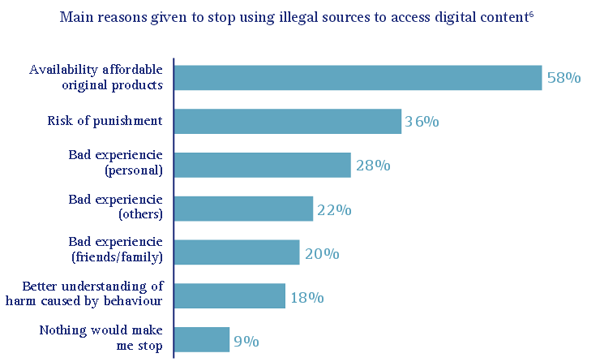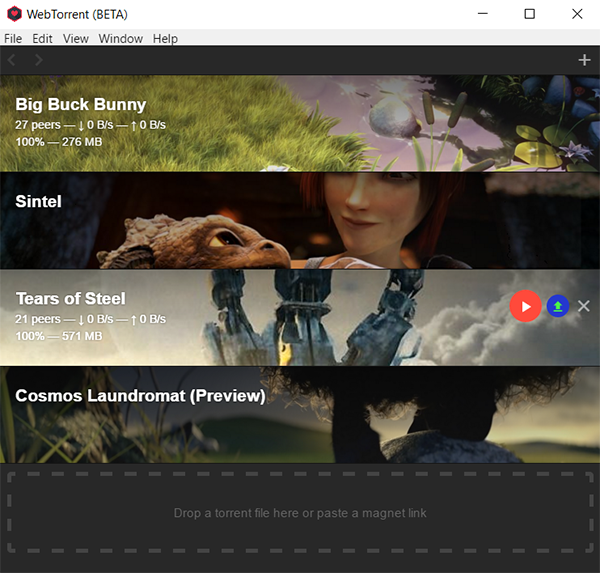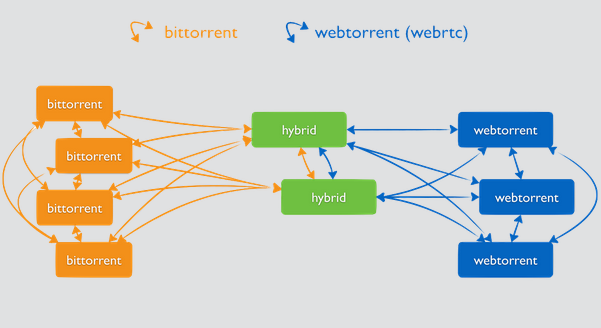38% of Young EU Internet Pirates See Nothing Wrong in Piracy
vendredi 8 avril 2016 à 15:15 In 2013 the European Union Intellectual Property Office (EUIPO) through the European Observatory on Infringements of Intellectual Property Rights commissioned a study titled “European Citizens and Intellectual Property: Perception, Awareness and Behavior.”
In 2013 the European Union Intellectual Property Office (EUIPO) through the European Observatory on Infringements of Intellectual Property Rights commissioned a study titled “European Citizens and Intellectual Property: Perception, Awareness and Behavior.”
Among other things the survey found that young people are often skeptical of the value that intellectual property can bring to the economy. With that in mind EUIPO ordered a follow-up study among 15-24 year-olds in all 28 Member States, aiming to learn more about the way young people behave online and why they obtain content both legally and illegally.
The resulting report, Intellectual Property and Youth 2016, has just been published and it raises some interesting points, including that young people do not feel particularly well-informed about IP issues.
Poorly informed
“The report reveals that young European citizens feel there is a lack of information about IP that would help them understand the issues. They also say that the information that is available is not communicated effectively to their age group,” says EUIPO Executive Director António Campinos.
“These factors combine to produce an atmosphere of indifference so that many young people who have been brought up in this digital age do not care whether they infringe IP or not.”
One in four admit to piracy
According to the study, one in four young people admitted to using illegal sources to access content during the previous 12 months. However, an impressive 81% of respondents said that they use legal sources for accessing online content, leaving a tiny percentage as self-confessed hardcore pirates.
“This means that only a minority (5%) solely uses illegal sources to access online content,” the report notes.
Overall, music was the most popular content downloaded or streamed by young people with 97% of respondents saying they do so from both legal and illegal sources. Just over half (56%) of young people said they use illegal sources to access music.
In contrast, 95% of respondents said they obtained movies and TV shows online in the preceding 12 months, with 85% admitting doing so intentionally from illegal sources.

Reasons for using pirate sources
Of course, the big question is why these young people choose to act illegally. Perhaps unsurprisingly, two-thirds cited price as the main driver for obtaining content from pirate sources.
However, the second most important reason according to respondents is that they simply do not see anything wrong with piracy as long as it’s for personal use. A not insignificant 38% of young people hold this opinion. Interestingly, that number reduces to 28% among the subset who graduated from higher education.
From this point on, however, the reasons for using illegal sources relate mostly to service issues. Content being available more quickly was cited by 33%, closely followed by 31% who enjoyed not being forced to register for a service. An equal 30% enjoyed both the larger choice on pirate sites while finding media easier to discover and access.

Reasons to stop being a pirate
In keeping with the finding that price is a key motivator to commit piracy, the survey found that the number one reason (58%) for young people to stop using illegal sources would be the availability of affordable content from legal sources.
In second place with 36% came the risk of punishment, followed by personally having a bad experience on a pirate site. Just 18% said that consideration of the harms caused by piracy would be a factor in avoiding illegal sources.
“Amongst those in the focus groups who are aware that they are using illegal sources to access digital content, the potential loss of income that music or movie stars could suffer caused by their behavior, does not seem to make an impression,” the report concludes.

While the survey’s findings (pdf) suggest that there is an opportunity for the entertainment industries to gain ground with educational campaigns alongside the threat of some kind of punishment, nothing can trump available, affordable content presented in a convenient and timely manner.
Source: TF, for the latest info on copyright, file-sharing, torrent sites and ANONYMOUS VPN services.
 Featuring
Featuring 



 One of the key roles of the EU’s Court of Justice is to interpret European law to ensure that it’s applied in the same manner across all member states.
One of the key roles of the EU’s Court of Justice is to interpret European law to ensure that it’s applied in the same manner across all member states.